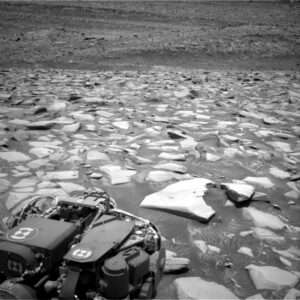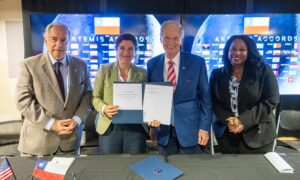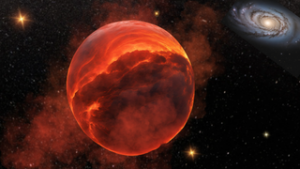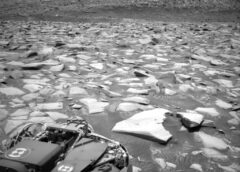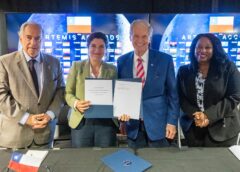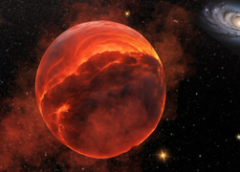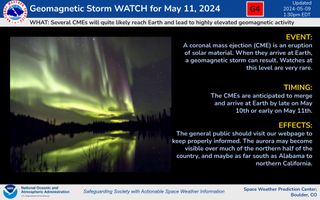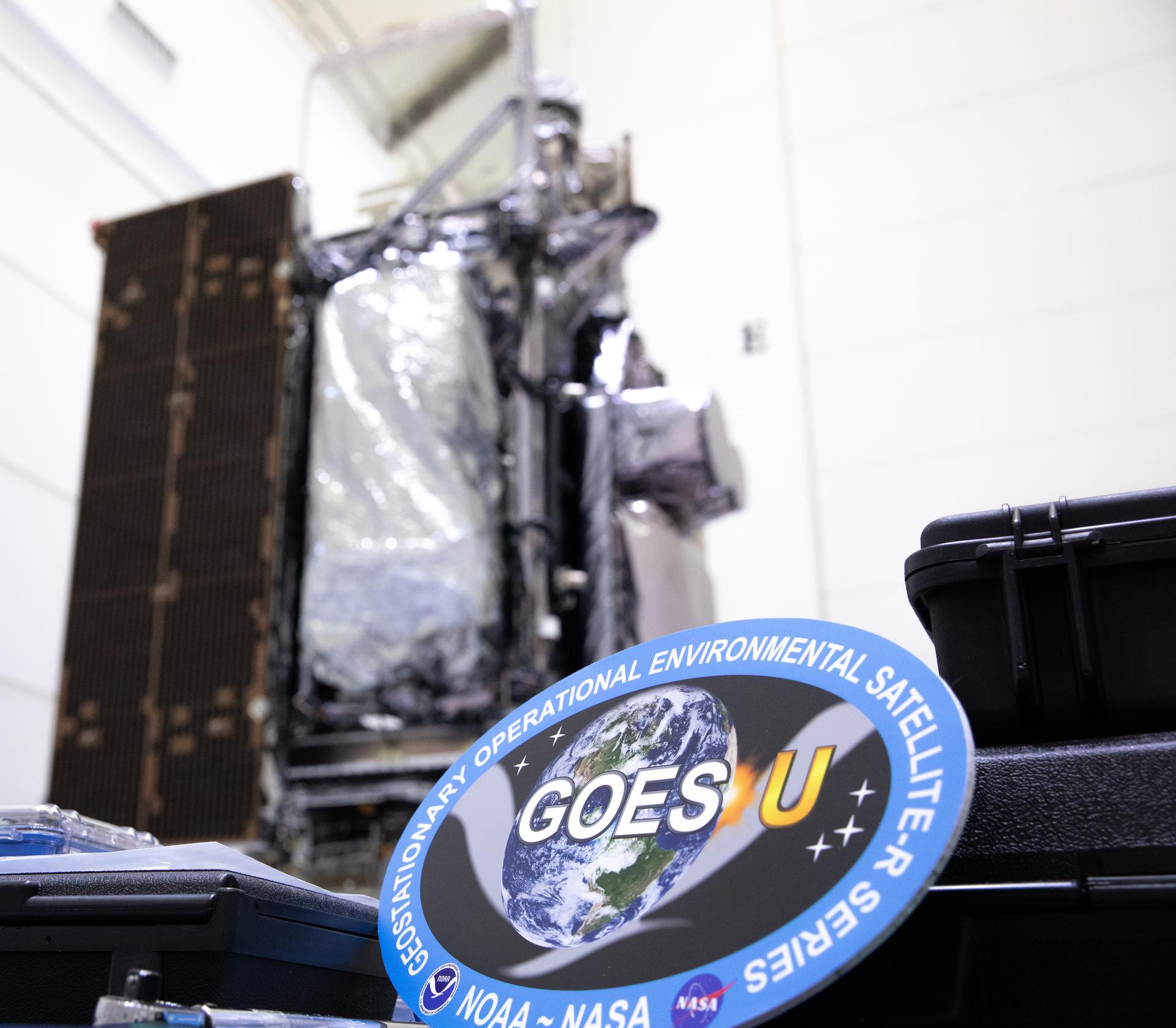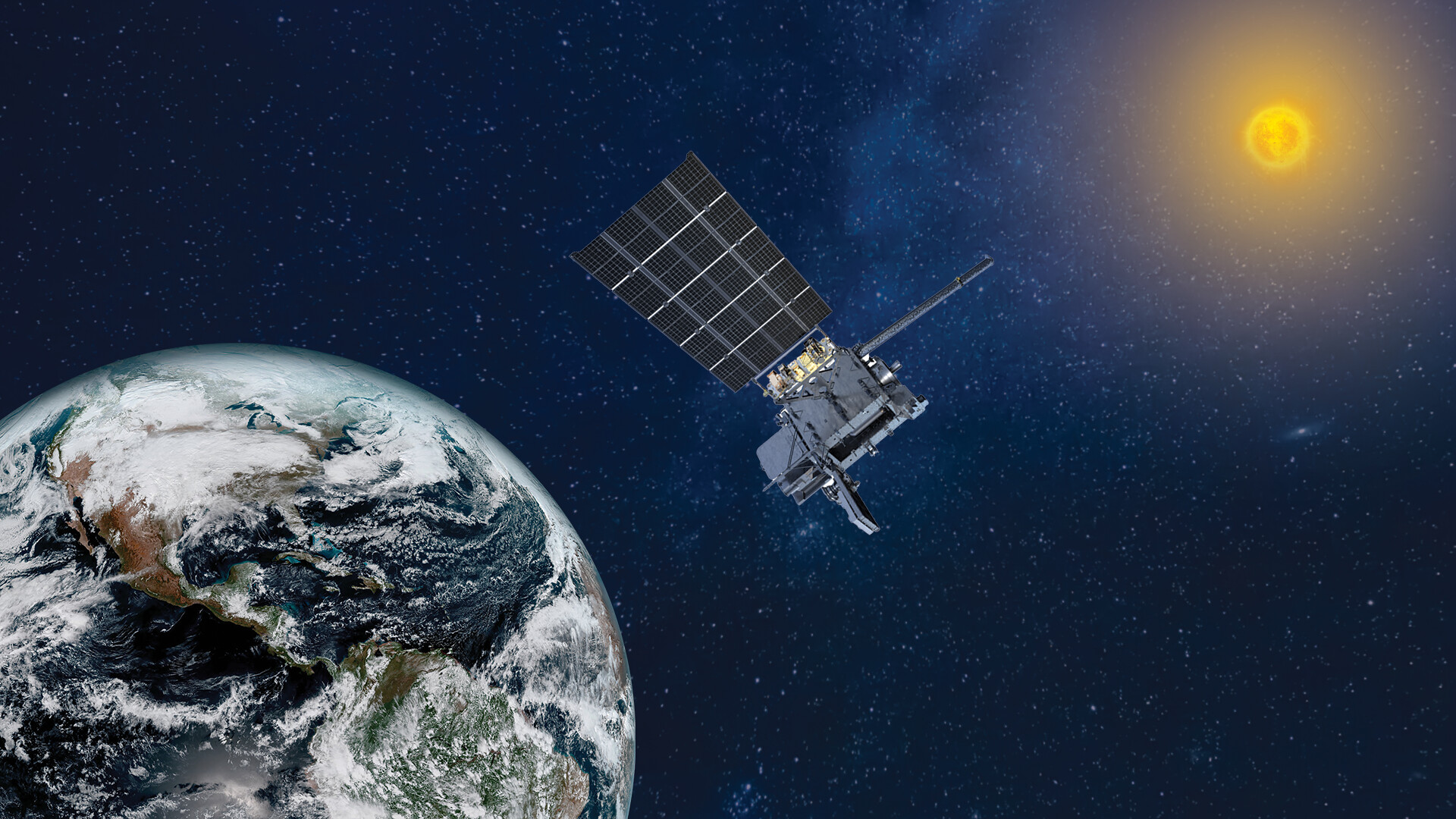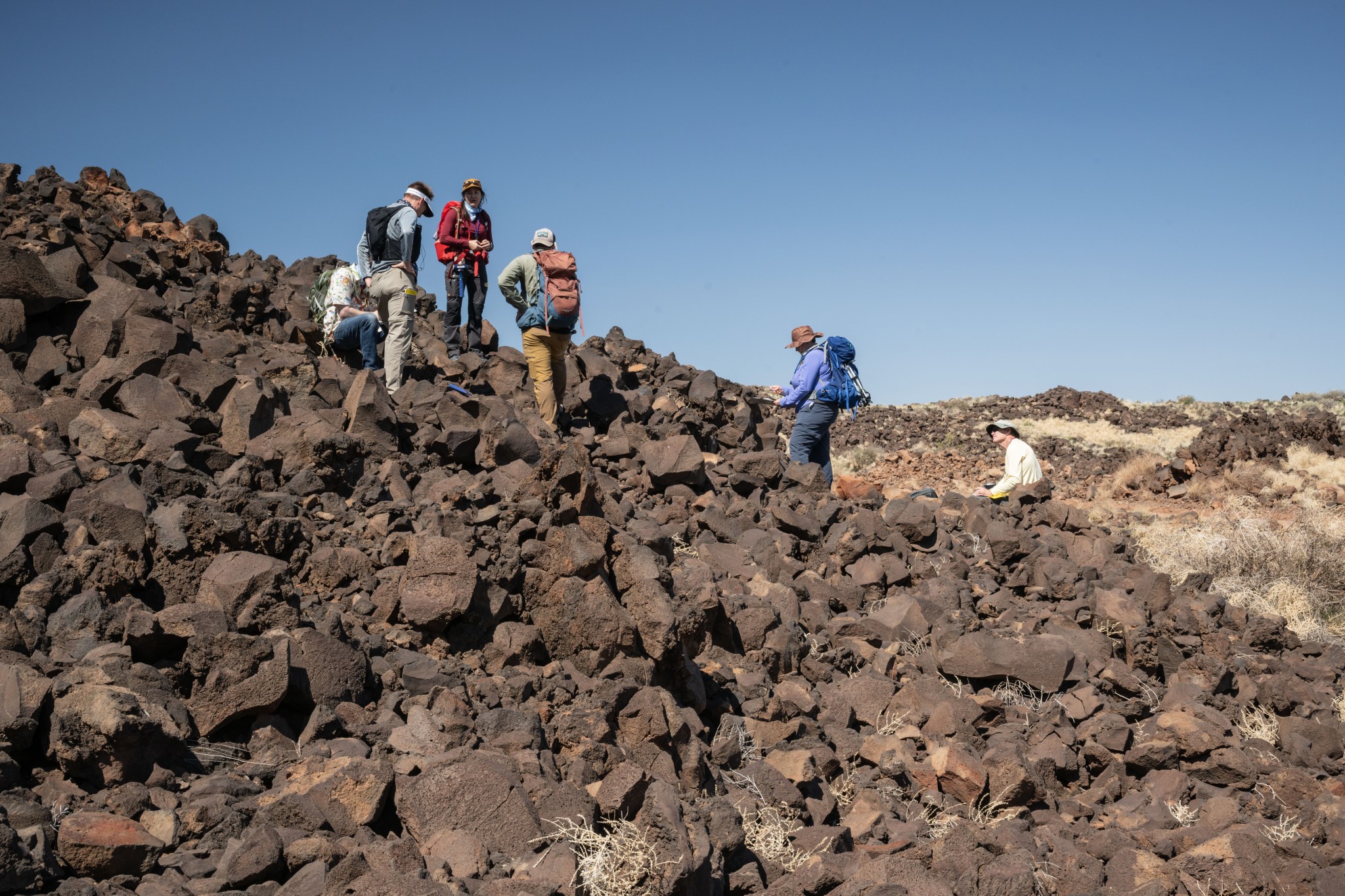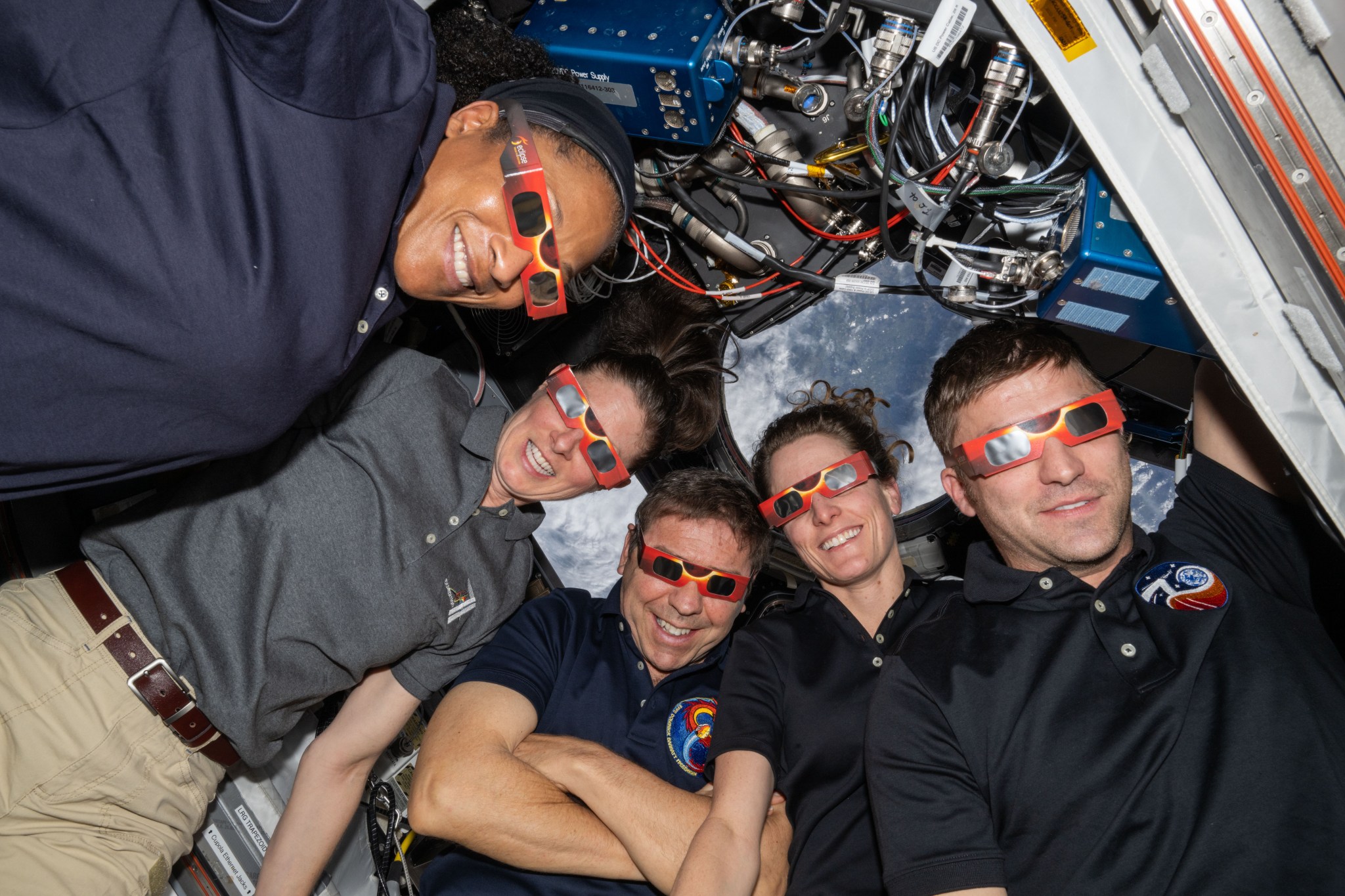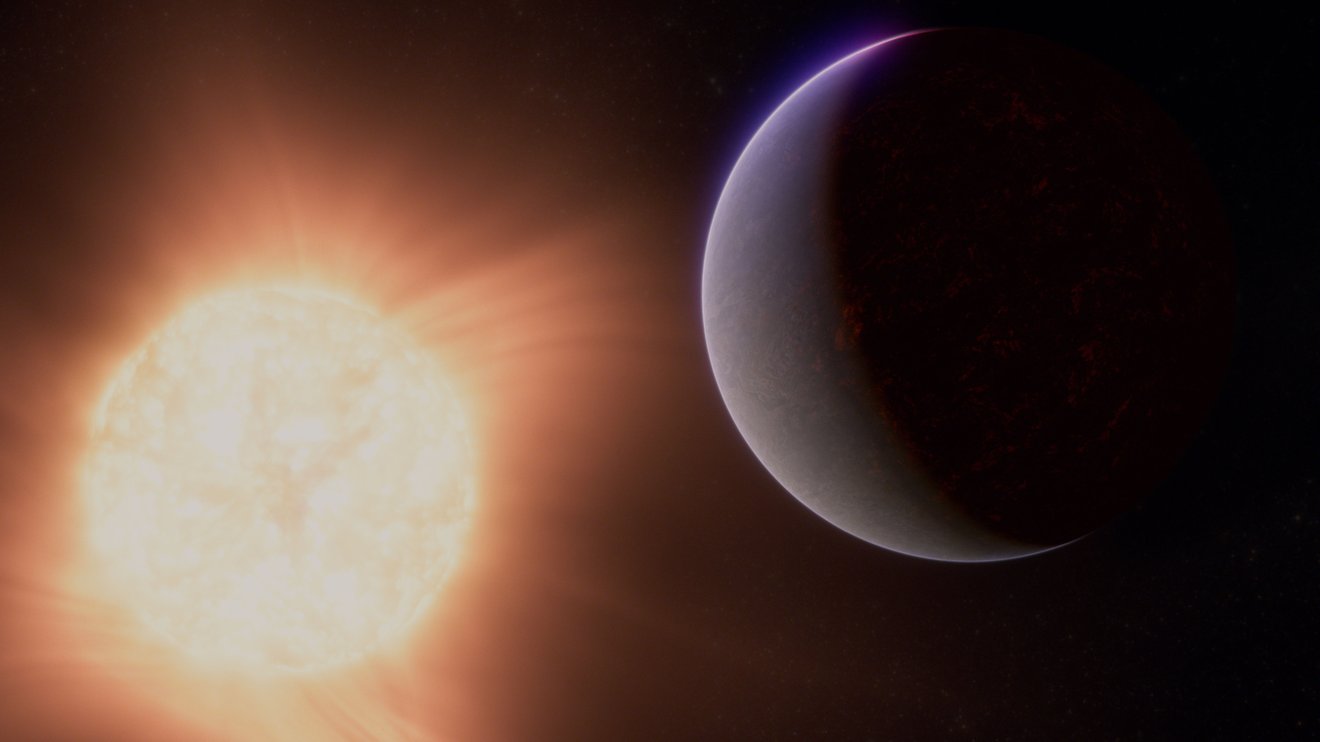The National Oceanic and Atmospheric Administration’s Space Weather Prediction Center (SWPC) has bumped up this weekend’s geomagnetic storm watch to a level G4, the second highest on the scale. The change comes as solar activity continues at high levels and at least four coronal mass ejections (CMEs) propel toward Earth. According to the NOAA’s SWPC, to have a watch at this level is rare, but it is indeed issued when there’s a high likelihood that several CMEs will reach Earth and create “highly elevated” geomagnetic activity. As we’ve reported lately,…
Read MoreNASA Invites Social Creators for Launch of NOAA Weather Satellite
The mission insignia of NOAA’s Geostationary Operation Environmental Satellite-U (GOES-U) mission is pictured in front of the satellite in a vertical position on Wednesday, Jan. 24, 2024, at the Astrotech Space Operations Facility near the agency’s Kennedy Space Center in Florida. Part of a collaborative NOAA and NASA program, GOES-U is the fourth in a series of four advanced geostationary weather satellites. Data from the GOES satellite constellation – consisting of the GOES-R, GOES-S, GOES-T and GOES-U spacecraft – enables forecasters to predict, observe, and track local weather events that…
Read MoreNASA Invites Media to NOAA’s Advanced Weather Satellite Launch
GOES-U spacecraft rendering. Credit: NOAA/Lockheed Martin NASA is preparing to launch NOAA’s (National Oceanic and Atmospheric Administration) GOES-U (Geostationary Operational Environmental Satellite U), a mission to help improve weather observing and environmental monitoring capabilities on Earth, as well as advance space weather observations. NASA and SpaceX are targeting a two-hour launch window opening at 5:16 p.m. EDT Tuesday, June 25. The mission will launch on a SpaceX Falcon Heavy rocket from Launch Complex 39A at NASA’s Kennedy Space Center in Florida. The satellite will carry a suite of instruments for…
Read MoreNASA Field Geology Training Prepares Artemis Mission Support Teams
4 min read Preparations for Next Moonwalk Simulations Underway (and Underwater) A small team of participants in the Geology 101 field training gather on a large pile of rocks from a lava flow. NASA/Robert Markowitz NASA engineers, managers, and flight directors recently traded their cubicles and conference rooms for an ancient volcanic field in the northern Arizona desert to participate in a field geology course aimed at arming them with first-hand experience in what Artemis astronauts will do when they explore the Moon. The two-and-a-half-day exercise for Artemis mission support…
Read MoreNASA SCoPE Engages and Empowers at AbSciCon 2024 with Gaming Activities and Childcare Support
2 min read NASA SCoPE Engages and Empowers at AbSciCon 2024 with Gaming Activities and Childcare Support At the AbSciCon conference held from May 6-10, 2024 in Providence, RI, NASA SCoPE (SMD Community of Practice for Engagement) left a lasting impression with its engaging activities centered around gaming. The NASA SCoPE exhibit hall booth was a vibrant hub featuring three digital game consoles, where nearly 150 of the 900 conference attendees, had the opportunity to learn about NASA Science Activation, the NASA SCoPE project, and avenues for proposing funded projects…
Read MoreSierra Space’s 1st Dream Chaser space plane aces key tests. Next stop: Florida launch site.
The private Dream Chaser space plane is closer to reaching the final frontier than ever before, with a completed checklist from its environmental testing phase and preparations underway to send it to Florida for final testing ahead of launch. Three months ago, Space.Com gave you up-close looks at Sierra Space’s inaugural Dream Chaser space plane at NASA’s Neil Armstrong Test Facility in Ohio. Since then, the robotic space plane, named “Tenacity,” and its Shooting Star cargo module have successfully completed a series of assessments to prepare them for space’s…
Read MoreSpitzer Space Telescope Captures Galactic Snack
This image of the Andromeda galaxy uses data from NASA’s retired Spitzer Space Telescope. Multiple wavelengths are shown, revealing stars (in blue and cyan), dust (red), and areas of star formation.
Read MoreNASA’s Nancy Grace Roman Telescope will hunt for tiny black holes left over from the Big Bang
Black hole week is in full swing, and to celebrate, NASA has explained how its next major astronomical instrument, the Nancy Grace Roman Space Telescope, will hunt for tiny black holes that date back to the Big Bang. When we think of black holes, we tend to picture vast cosmic monsters like stellar-mass black holes with masses tens to hundreds of times that of the sun. We may even picture supermassive black holes with masses millions (or even billions) of times that of the sun sitting at the hearts of…
Read MoreArizona, New York Students to Hear from NASA Astronauts Aboard Station
(March 26, 2024) — Five NASA astronauts wear eye-protecting specs in anticipation of viewing the April 8 solar eclipse from the International Space Station’s cupola. Credits: NASA Students from Arizona and New York will have separate opportunities next week to hear from astronauts aboard the International Space Station. At 12:10 p.m. EDT on Tuesday, May 14, NASA astronauts Jeanette Epps and Tracy C. Dyson will answer prerecorded student questions from Sunnyside Unified School District in Tucson, Arizona, in partnership with the TRiO Upward Bound Program, PIMA Community College, Desert Vista…
Read MoreNASA’s Webb Hints at Possible Atmosphere Surrounding Rocky Exoplanet
7 min read NASA’s Webb Hints at Possible Atmosphere Surrounding Rocky Exoplanet This artist’s concept shows what the exoplanet 55 Cancri e could look like. Observations by NASA’s Webb telescope suggest it may be surrounded by an atmosphere rich in carbon dioxide or carbon monoxide, which could have bubbled up from of an ocean of magma on the planet’s surface. While the planet is too hot to be habitable, detecting its atmosphere could provide insights into the early conditions of Earth, Venus, and Mars. Researchers using NASA’s James Webb Space…
Read More
